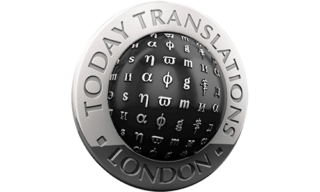The first comprehensive translation of the Indian “epic” “The Ramayana” from Sanskrit to Polish was finally completed this week.
“The Ramayana”
The substantial feat was achieved by Janusz Krzyzowski, chairman of the India-Poland Cultural Committee.
“The Ramayana” centres on the incredible adventures of Rama, an avatar of Hindu God Vishnu (the second God in the Hindu triumvirate of Brahman, Vishnu and Shiva), after his wife has been kidnapped by Ravana, King of Sri Lanka.
Krzyzowski told Indian news agency IANS that “Even Greek epics come out as pale shadows when we see the canvas of the Indian epics.”
“They are almost unique in the history of mankind”, he added.
The process of translation
The Sanskrit classic is thought to have been written in the 5th century BC and is believed to have been authored by the poet Valmniki. The oldest version that survives to this day dates back to the 11th century AD.
The translation of “The Ramayan” has been particularly anticipated. Some episodes of the epic, which is typically 24,000 verses over seven books, were originally translated into Polish from Western European versions in the early 19th century.
Krzyzowski stated, “My main purpose was to translate this epic into many chapters in a story format so that laymen and particularly Polish children could enjoy the book”, as well as gain awareness “of the great Indian mythological tradition”.
As demand for comprehensive and high-quality translations increases, the latest version stands alone from earlier offerings given that it is worked from the original language and utilised the skills of an expert translator.
India’s ambassador to Poland, Monika Mohta, endorsed Krzyzowski efforts, stating that he “deserves all our praise and we feel proud that such a gem is with us in Poland”.
Sanskrit’s background
Sanskrit is the primary language of Hinduism and a scholarly language in Buddhism and Jainism. Today it continues to be one of the 22 scheduled languages of India; it is protected by the Government of India and is an official language of the Union.
Indian and Polish connections
The attention falling on this Sanskrit-Polish translation is not surprising, considering India and Poland’s long shared common ground, aside from the translation of epic poems.
During the Second World War, a ruling Prince in Western Indian accepted 5,000 Polish orphans deported from Siberia. These children, to mark their appreciation, formed the World Association of Poles from India.
After the war, New Delhi and Warsaw became natural friends as they were both allies of the Soviet Union. Today, Poland is seen by India as a source of economic strength and a gateway to trade with Central Europe.
International trade
Today, as with the translation of “The Ramayan”, forging trade links with other countries can be a challenge. While it may be easy to forget, language can be one of the biggest barriers to international business and new markets.
English is often used throughout the world as the language of business but a multilingual approach to business has many benefits. Relying on English limits potential target audiences, markets and business partners. Similarly, making a linguistic effort can greatly strengthen trade relationships and give you a better chance at forging partnerships with businesses.
It is vitally important to utilise professional translation agencies that will be able to expertly translate and interpret any and all business communication that you conduct. Poor translation of business contracts or business meetings can make the difference between a successful new partnership and a lost opportunity.
At Today Translations, we have a team of professional translators, interpreters and linguists with many years of experience in aiding business translation requests. Their fluency and linguistic skills are combined with cultural understanding to create accurate translations in over 200 languages, dynamic to your requirements.
To discuss your translation requirements, please call us on +44 (0) 207 397 2770, or email us at [email protected]

